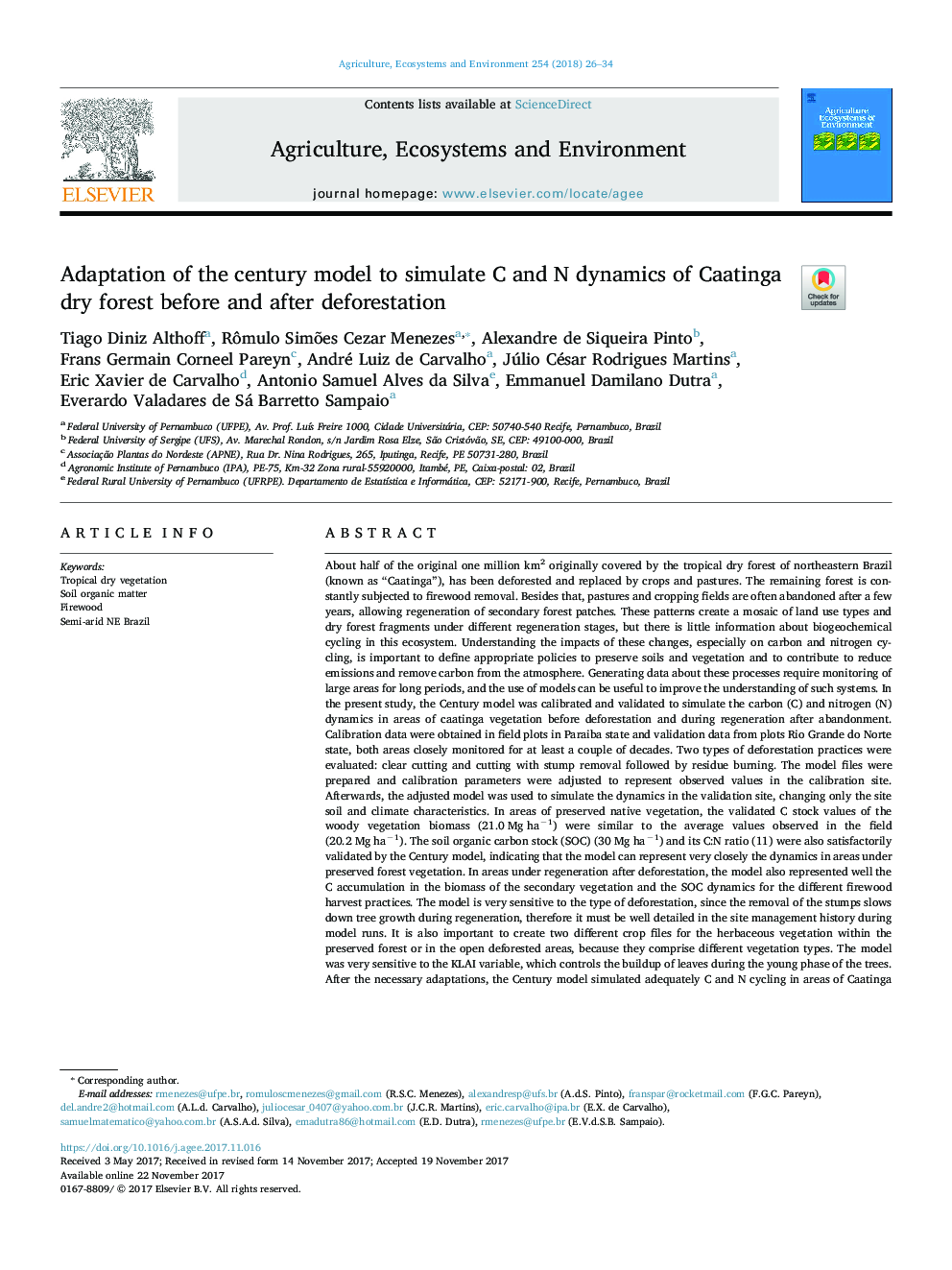| Article ID | Journal | Published Year | Pages | File Type |
|---|---|---|---|---|
| 8487198 | Agriculture, Ecosystems & Environment | 2018 | 9 Pages |
Abstract
About half of the original one million km2 originally covered by the tropical dry forest of northeastern Brazil (known as “Caatinga”), has been deforested and replaced by crops and pastures. The remaining forest is constantly subjected to firewood removal. Besides that, pastures and cropping fields are often abandoned after a few years, allowing regeneration of secondary forest patches. These patterns create a mosaic of land use types and dry forest fragments under different regeneration stages, but there is little information about biogeochemical cycling in this ecosystem. Understanding the impacts of these changes, especially on carbon and nitrogen cycling, is important to define appropriate policies to preserve soils and vegetation and to contribute to reduce emissions and remove carbon from the atmosphere. Generating data about these processes require monitoring of large areas for long periods, and the use of models can be useful to improve the understanding of such systems. In the present study, the Century model was calibrated and validated to simulate the carbon (C) and nitrogen (N) dynamics in areas of caatinga vegetation before deforestation and during regeneration after abandonment. Calibration data were obtained in field plots in Paraiba state and validation data from plots Rio Grande do Norte state, both areas closely monitored for at least a couple of decades. Two types of deforestation practices were evaluated: clear cutting and cutting with stump removal followed by residue burning. The model files were prepared and calibration parameters were adjusted to represent observed values in the calibration site. Afterwards, the adjusted model was used to simulate the dynamics in the validation site, changing only the site soil and climate characteristics. In areas of preserved native vegetation, the validated C stock values of the woody vegetation biomass (21.0 Mg haâ1) were similar to the average values observed in the field (20.2 Mg haâ1). The soil organic carbon stock (SOC) (30 Mg haâ1) and its C:N ratio (11) were also satisfactorily validated by the Century model, indicating that the model can represent very closely the dynamics in areas under preserved forest vegetation. In areas under regeneration after deforestation, the model also represented well the C accumulation in the biomass of the secondary vegetation and the SOC dynamics for the different firewood harvest practices. The model is very sensitive to the type of deforestation, since the removal of the stumps slows down tree growth during regeneration, therefore it must be well detailed in the site management history during model runs. It is also important to create two different crop files for the herbaceous vegetation within the preserved forest or in the open deforested areas, because they comprise different vegetation types. The model was very sensitive to the KLAI variable, which controls the buildup of leaves during the young phase of the trees. After the necessary adaptations, the Century model simulated adequately C and N cycling in areas of Caatinga vegetation in the semi-arid region of Brazil. The model will now be a useful tool to better understand ecosystem functioning in this region.
Keywords
Related Topics
Life Sciences
Agricultural and Biological Sciences
Agronomy and Crop Science
Authors
Tiago Diniz Althoff, Rômulo Simões Cezar Menezes, Alexandre de Siqueira Pinto, Frans Germain Corneel Pareyn, André Luiz de Carvalho, Júlio César Rodrigues Martins, Eric Xavier de Carvalho, Antonio Samuel Alves da Silva, Emmanuel Damilano Dutra,
